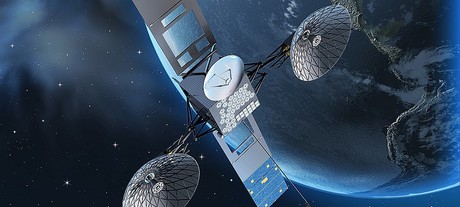NASA commsat undergoes final testing

NASA’s TDRS-M satellite will give the agency the ability to support space communications for 15 more years.
The Tracking and Data Relay Satellite (TDRS) project has begun final testing on a new satellite that will replenish NASA’s Space Network. The spacecraft is scheduled to launch from NASA’s Kennedy Space Center in Cape Canaveral, Florida, on 3 August 2017 on an Atlas V rocket.
The addition of TDRS-M to the fleet will provide the Space Network with the ability to support space communications for an additional 15 years.
The TDRS satellites transmit data to and from ground stations for NASA missions and expendable launch vehicles.
Without the Space Network, scientists, engineers and mission control staff would be unable to readily access data from missions like the Hubble Space Telescope and the International Space Station.
“The Space Network is critical to numerous NASA missions that are fundamentally changing the way we think about science,” said Bill Marinelli, TDRS development manager with the Space Communications and Navigation (SCaN) program office at NASA Headquarters, which provides programmatic oversight to the TDRS mission.
“By expanding the fleet of satellites that support communications from these missions, TDRS-M will enable NASA to continue scientific exploration and discovery for years to come.”
Designed, built and environmentally tested at Boeing’s satellite development centre in El Segundo, California, the spacecraft is currently undergoing a final series of tests to ensure it is flight-ready.
TDRS-M will continue to undergo electronics, compatibility and deployment tests throughout autumn as the team prepares to ship the spacecraft to Kennedy Space Center for its launch.

NASA developed the idea for the Space Network in the 1970s to improve upon the ground-based space communications networks the agency had used since its inception.
Those ground stations could only connect with spacecraft for short periods of time while they were in sight of the ground terminal.
In coming months, engineers will test TDRS-M to ensure it connects with the Space Network’s various ground stations.
NASA built the initial White Sands Ground Terminal (WSGT) in Las Cruces, New Mexico, in the 1970s and launched the first TDRS in 1983. In the 1980s, NASA identified the need for and built the Second TDRS Ground Terminal (STGT) at White Sands, forming the White Sands Complex.
Today the network has added two more ground terminals in Guam and Blossom Point, Maryland, and currently has nine TDRS in orbit around Earth. Two of the original spacecraft have now been retired.
The two most recent satellites, TDRS-K and TDRS-L, were launched from Kennedy Space Center to replenish the fleet in January 2013 and January 2014, respectively. After the scheduled TDRS-M launch later this year, the TDRS project will have successfully launched 12 satellites in support of the Space Network.
RFUANZ report: setting the frequency for success in 2025
Last year brought a lot of internal change for RFUANZ, but the association has hit the ground...
ARCIA update: an extended event calendar for 2025
With the addition of Tasmanian events and a conference in Adelaide in September, 2025 will see...
ARCIA update: plans for 2025
ARCIA will be holding a mixture of workshop, conference and networking events in 2025, in the...





